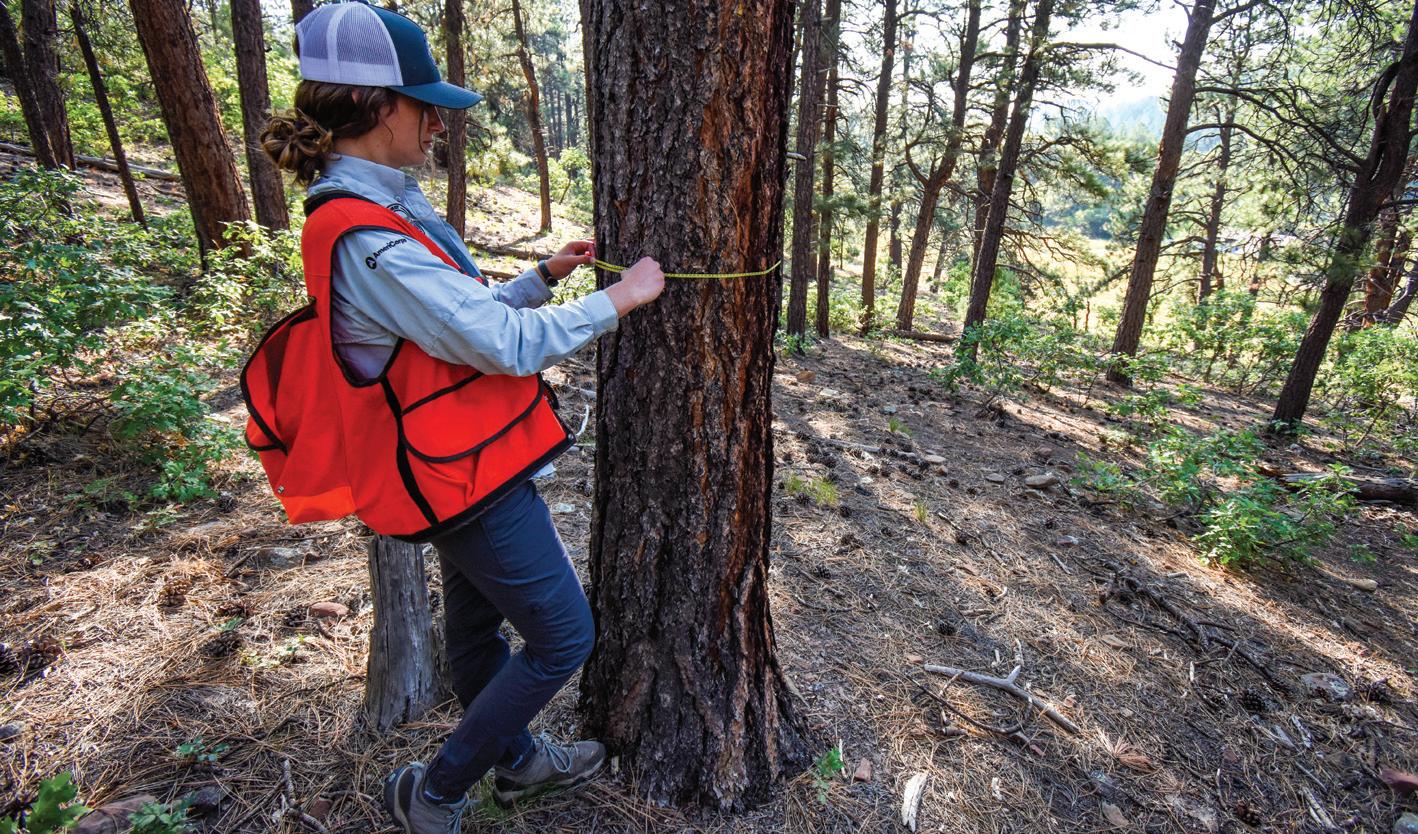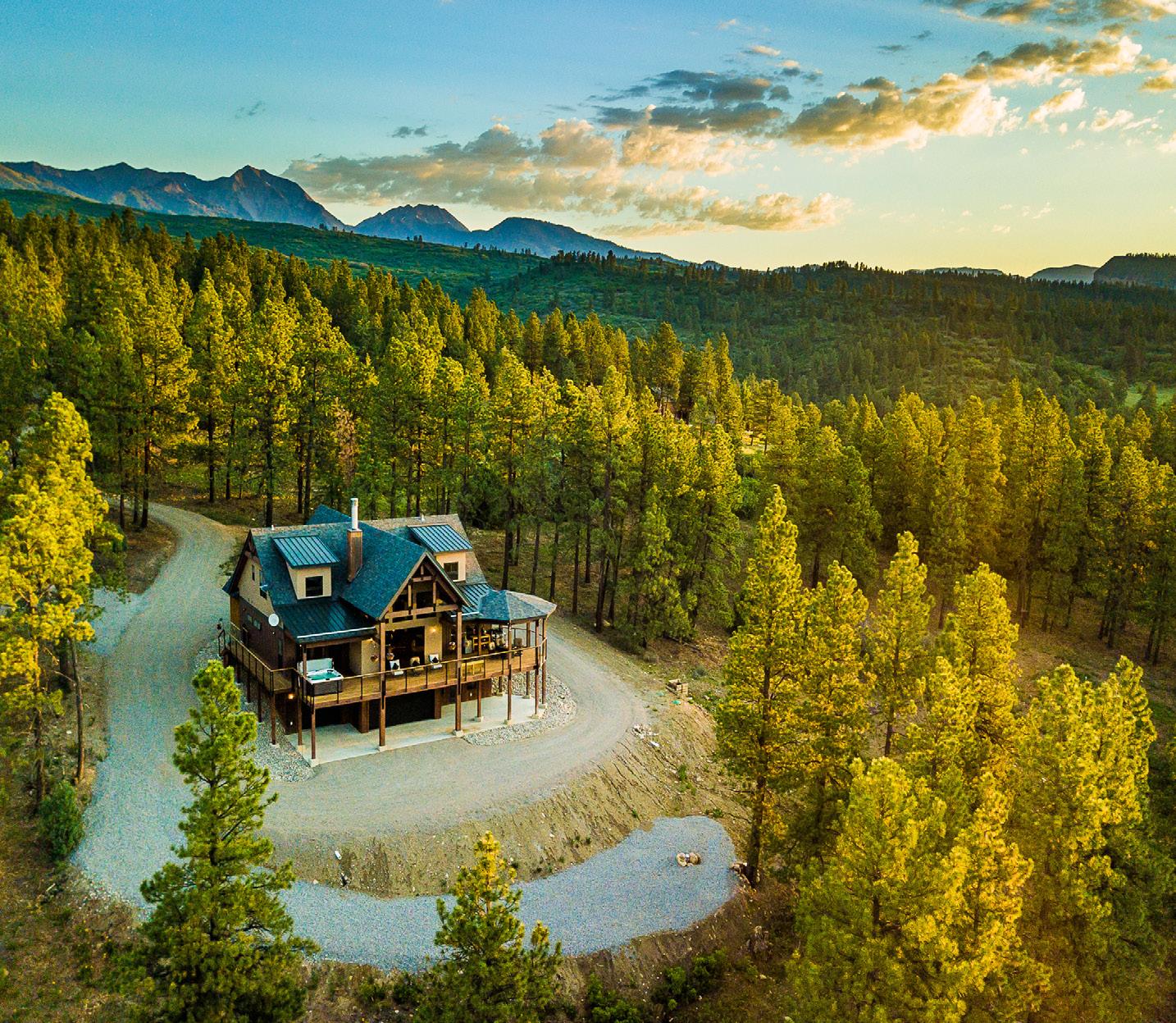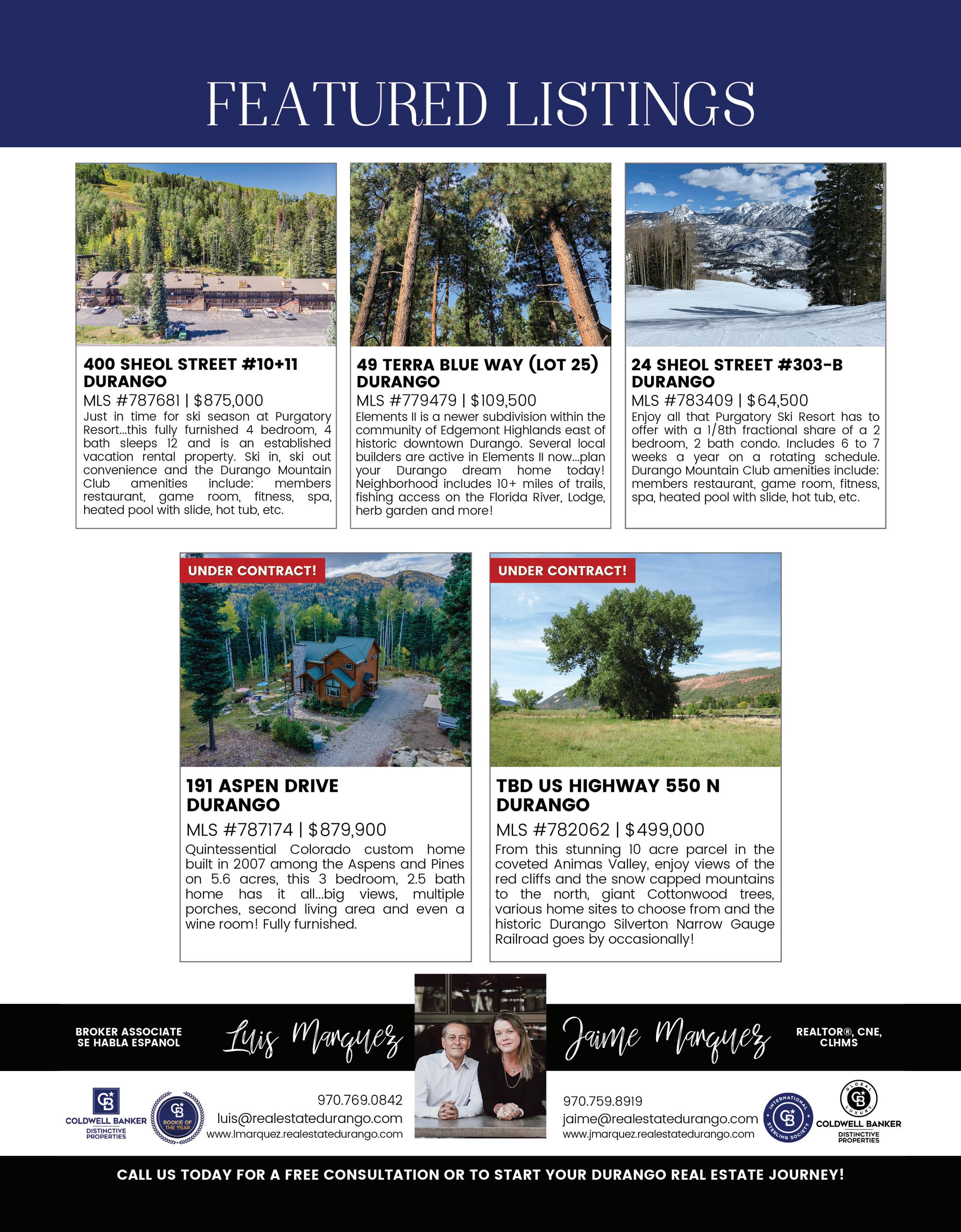
6 minute read
Wildfire in Urban Communities
PROTECTING OUR FORESTS FROM SEVERE FIRE:
Wildfire in Urban Communities
Snowcapped peaks, roaring rivers, and thousands of miles of trails make southwest Colorado a true outdoor paradise. But the forests that support our beautiful landscape are overcrowded and stressed. In our dry climate, those denser forests are prone to higher chances of severe wildfire, insect infestation, and other negative impacts for wildlife.
This is not a doom-and-gloom story though. There are actions we can take as a community to restore the health of our treasured forests. Private forest landowners, in particular, have a critically important role in helping to restore forest ecosystems and improving the resilience and safety of our communities.

Why are the forests unhealthy?
In 2020, we witnessed three of the largest fires in Colorado’s history: the Cameron Peak Fire (208,663 acres), the East Troublesome Fire (192,560 acres), and the Pine Gulch Fire (139,007 acres). Climate change concerns, such as prolonged drought and higher temperatures, will continue to add stress to our forests, which means that in the years to come we
can likely expect longer and more severe fire seasons, like those in 2020. Before we can dive into how to resolve our forest health issues, it’s important to understand the choices that brought us here, two of which are key: historic fire suppression policies and development of previously unoccupied, wild landscapes.
For thousands of years prior to EuroAmerican settlement, fire played a pivotal role in shaping and maintaining the health of many ecosystems across Colorado. This was especially true for our forested landscapes. In Colorado’s lower-elevation forests, frequent and low-intensity fires promoted mature tree health by minimizing competition for important resources like sun and water. In higher-elevation forests, species like lodgepole pine relied on high-intensity fires for regeneration. The Euro-American settlement of Colorado gradually led to the elimination of these natural fires. Legendary wildfires like the Great Fire of 1910, which burned three million acres across Montana, Idaho, and Washington in just two days, contributed to a philosophy that fire was dangerous for Western communities and their burgeoning economies. This resulted in the U.S. Forest Service initiating a strict fire suppression policy, which was very successful at stamping out fire at all costs.
Big River Collective LLC

BEFORE MITIGATON:


Big River Collective LLC
Kyle O'Neill, CSFS-NRCS Eventually, scientific research in the 1960s demonstrated that fire had a positive role in forest health. Since then, we’ve slowly begun to see a shift in fire suppression policy across the West, allowing naturally caused fires to burn in designated wilderness areas.
Yet fire management has become more complicated in the last few decades as we’ve seen a boom in population across Western communities. With more and more people living in the West, human development has significantly expanded into previously undeveloped forested areas, referred to as the “wildland-urban interface.” This expansion has led to measurable negative environmental impacts, including increased risk of human-caused wildfire and renewed support of fire suppression policies to protect those new homes and other structures.
Combined, the legacy of fire suppression and the impacts of rapid development in the wildland-urban interface have undoubtedly strained Colorado’s forest ecosystems. Our forests today are overcrowded and fighting for increasingly limited water resources. These unhealthy conditions have enabled widespread pest and disease infestation, which in turn have caused high rates of tree mortality. All of these factors combine to create a high risk of severe wildfire for our southwest Colorado communities.
Become part of the solution
To protect our residential mountain communities, we need to restore the health of our forests and help them adapt to greater risk of drought and severe fire. Private landowners play a crucial role in the solution for this region, because private property comprises more than 15 percent of the forested landscape.
Beyond creating defensible space around their homes and structures, private landowners with forested properties should consider reducing tree density on their land through active forest-management practices such as thinning, mastication (the breaking down of forest fuels), pruning, and prescribed burns that remove potential wildfire fuels.
“I own a 30-acre parcel of forestland northeast of Elmore’s Corner Store. I have always been concerned about the correct way to effectively manage the property for fire mitigation and forest health, but I was lacking the tools to take any action – until My Southwest Forest came along with an offer to help.” – Andy Watson, private landowner
Andy is not alone. In the last three years, more than 75 landowners have connected with a forester through My Southwest Forest, a local partnership dedicated to providing free technical assistance to private landowners, to discuss active forest-management options for their property. The MSF partnership was formed by the American Forest Foundation, the Colorado State Forest Service, the Natural Resources Conservation Service, and Southwest Conservation Corps.
“My Southwest Forest is a great opportunity for landowners looking to engage with their properties in a new way. Our foresters can help landowners reduce fire risk, improve wildlife habitat, increase biodiversity, and learn about the ecology of their properties. And for those ready to take the next step, MSF will provide a free Forest Management Plan that can guide landowners to foster healthier forests through active forest management.” – Nick Olson of Southwest Conservation Corps and active partner of My Southwest Forest program
While forest-management treatments completed on private lands are unique to each landowner’s priorities and property needs, the overarching goal of these efforts is the same: reduce tree density to restore forest health, decrease severe fire risk, and create a more resilient landscape across southwest Colorado.
Right now, My Southwest Forest is operating in Pagosa, Bayfield, and eastern Durango, with plans to expand west in the coming years. That said, the My Southwest Forest partnership is one of many groups coordinating to restore forest health across the landscape.
“Building a fire-resilient landscape requires a lot of hands on deck. In southwest Colorado, we are fortunate to have a wide array of agencies, conservation partners, and large-scale collaborative groups working together to reduce fire risk and restore forest health. It’s a big effort to coordinate all of this work, but it’s exciting to see the resulting momentum – from on-the-ground private-lands action through programs like My Southwest Forest and the strategic leadership of the Rocky Mountain Restoration Initiative.” – Cody Robertson, resource team lead with the Natural Resources Conservation Service and active partner of the My Southwest Forest Program
Protecting our communities requires a multipronged, coordinated effort. If you own forestland in southwest Colorado, you are also part of the solution.
* * *
Contact one of the local agency offices to talk with a forest expert about how to take action on your land and get connected to programs like My Southwest Forest:
Natural Resources Conservation Service (NRCS)
31 Suttle Street Durango, CO 81303 (970) 422-3370 cody.robertson@co.usda.gov
Colorado State Forest Service (CSFS)
1000 Rim Drive Fort Lewis College Campus Durango, CO 81301 (970) 247-5250 CSFS_Durango@mail.colostate.edu
To learn more about My Southwest Forest, visit: mysouthwestforest.org












